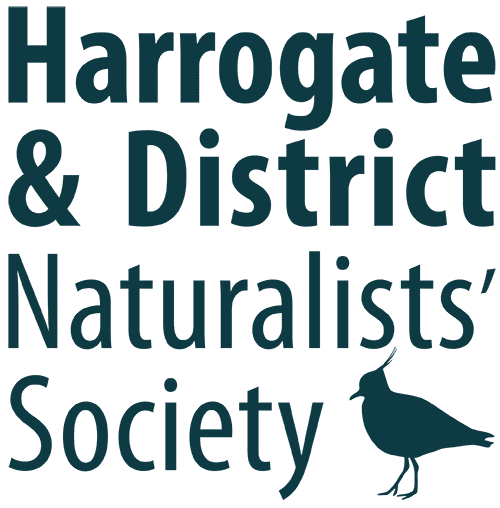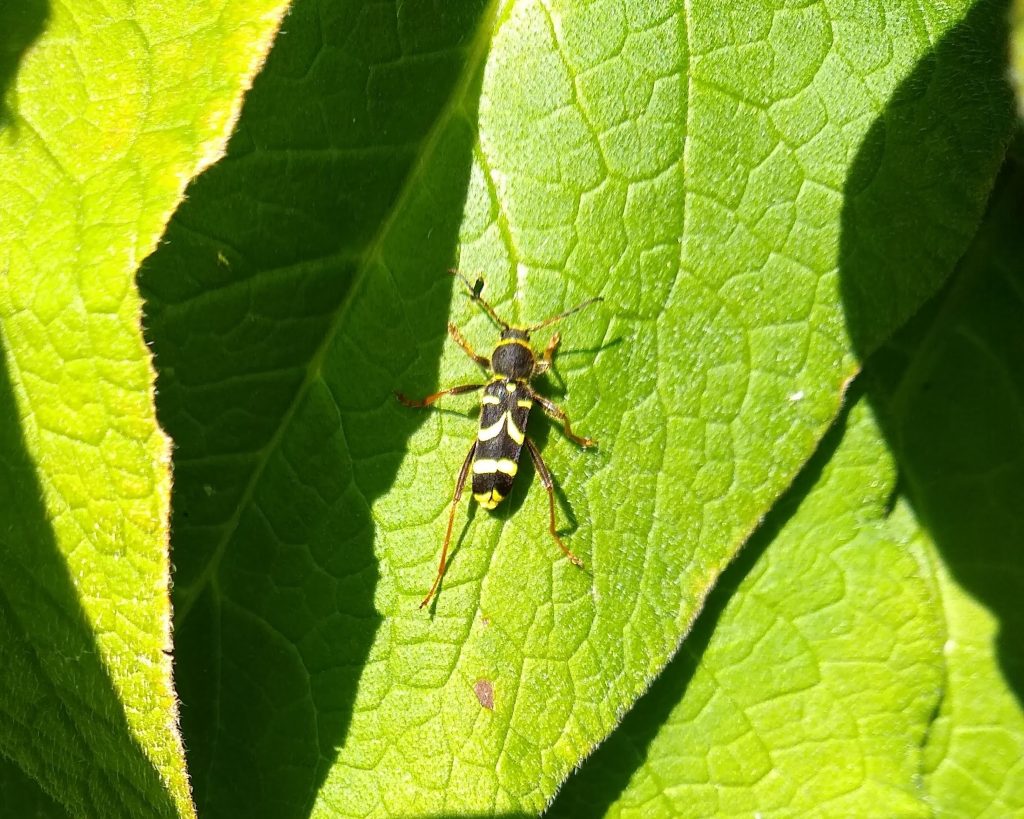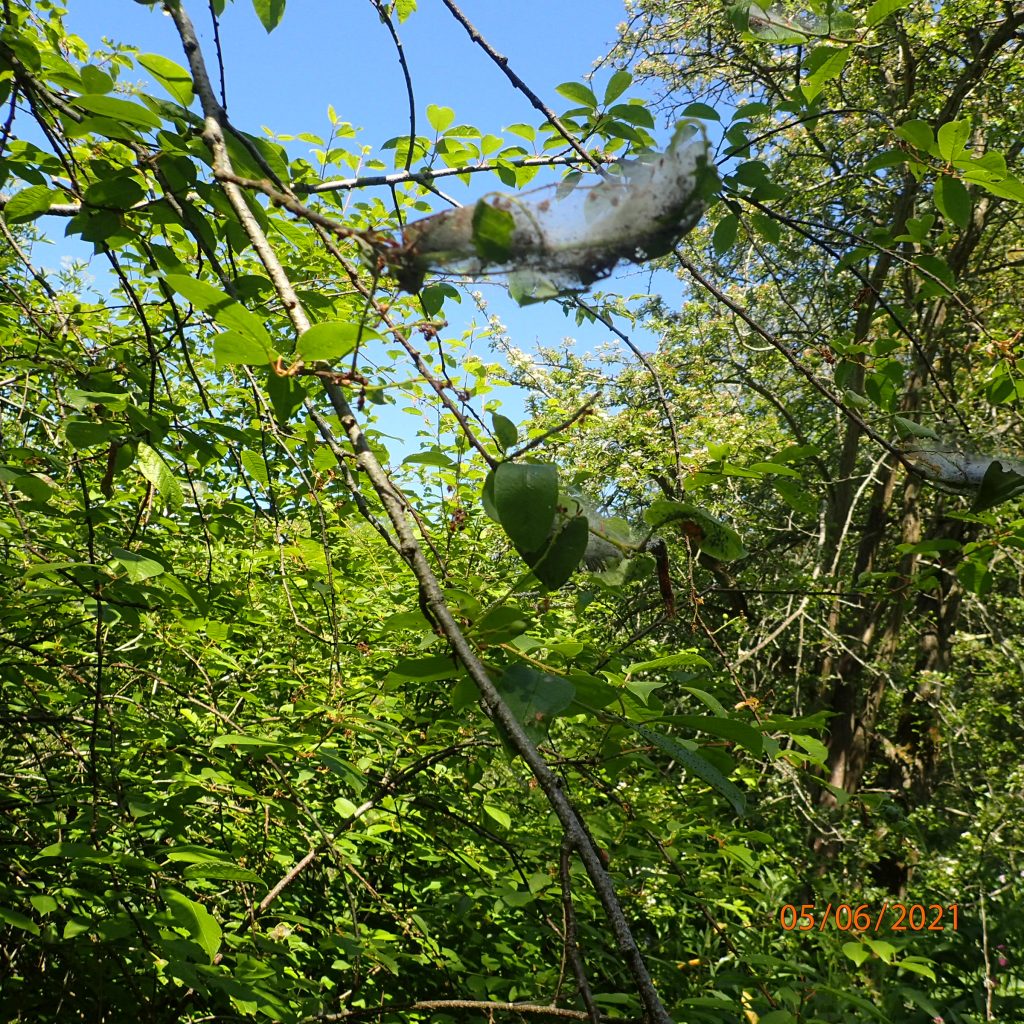High Batts is situated on the banks of the River Ure and comprises 32 acres of mixed woodland with some open clearings.
One of the volunteers at the reserve, Pandora, kindly offered to show us around. Her extensive knowledge was a real treat for us and made for a very pleasurable visit especially with the weather being so warm and sunny – perfect for spotting wildlife.
On our arrival we were surprised to see Colin Slator and others who had been up in the early hours moth trapping and were waiting to show us their numerous findings. Some of the moths were very beautiful including a Poplar Hawk Moth, White and Buff Ermines, Cinnabar and a Clouded Silver amongst others. We then watched them being released.
One of the first things that caught our eye were the Spindle Trees with their pretty little flowers of 4 petals forming a cross. Another tree we encountered was a Bird Cherry, which happens to be the food plant for the caterpillars of the Bird Cherry Ermine Moth. These caterpillars can strip trees of their leaves and cover them in webs. It then seems that the Bird Cherry trees recover after the caterpillars have pupated and turned into moths.
We managed to find over 100 plant species during our visit, with Comfrey being very, very plentiful in almost all areas. We managed six species of speedwell, including the Slender Speedwell with its delicate leaves and stem. Marjoram, Thyme and Water Mint were all present, together with the Burnet Rose with its lovely scent. It was also very pleasing to see Viper’s-bugloss emerging. These striking plants of high summer have a blue intensity which is just gorgeous. Of the ferns in the reserve, Male Fern was the dominant species. We also spotted several grasses and sedges including False and Barren Brome and Spring and Glaucous Sedge.
We found an extremely wasp-like Wasp Beetle, Clytus arietus. This beetle is a superb wasp mimic, flying well in sunny weather. We also spotted the Alder leaf beetle, Agelastica alni with its dark metallic blue colour. There were numerous Brimstone butterflies flying in the clearings, together with Orange Tip and Red Admiral.
The leafy surroundings made bird spotting very difficult, particularly since some of us were occasionally crawling around on our hands and knees. Naturalists who are able to do both at the same time are very clever. We did hear various species of bird, including Blackcap, Goldcrest and Green Woodpecker.
Overall, High Batts provided the group with an excellent array of wildlife in lovely surroundings. It is a well managed site and well worth a membership subscription. Our thanks to Pandora for showing us around, Colin and friends for the moths and to Muff and Kerry for organising the day.
Sonia Starbuck
Wasp Beetle (Sonia Starbuck) Webs of the Bird Cherry Ermine Moth caterpillars (Sonia Starbuck) Russian Comfrey (Sonia Starbuck)



